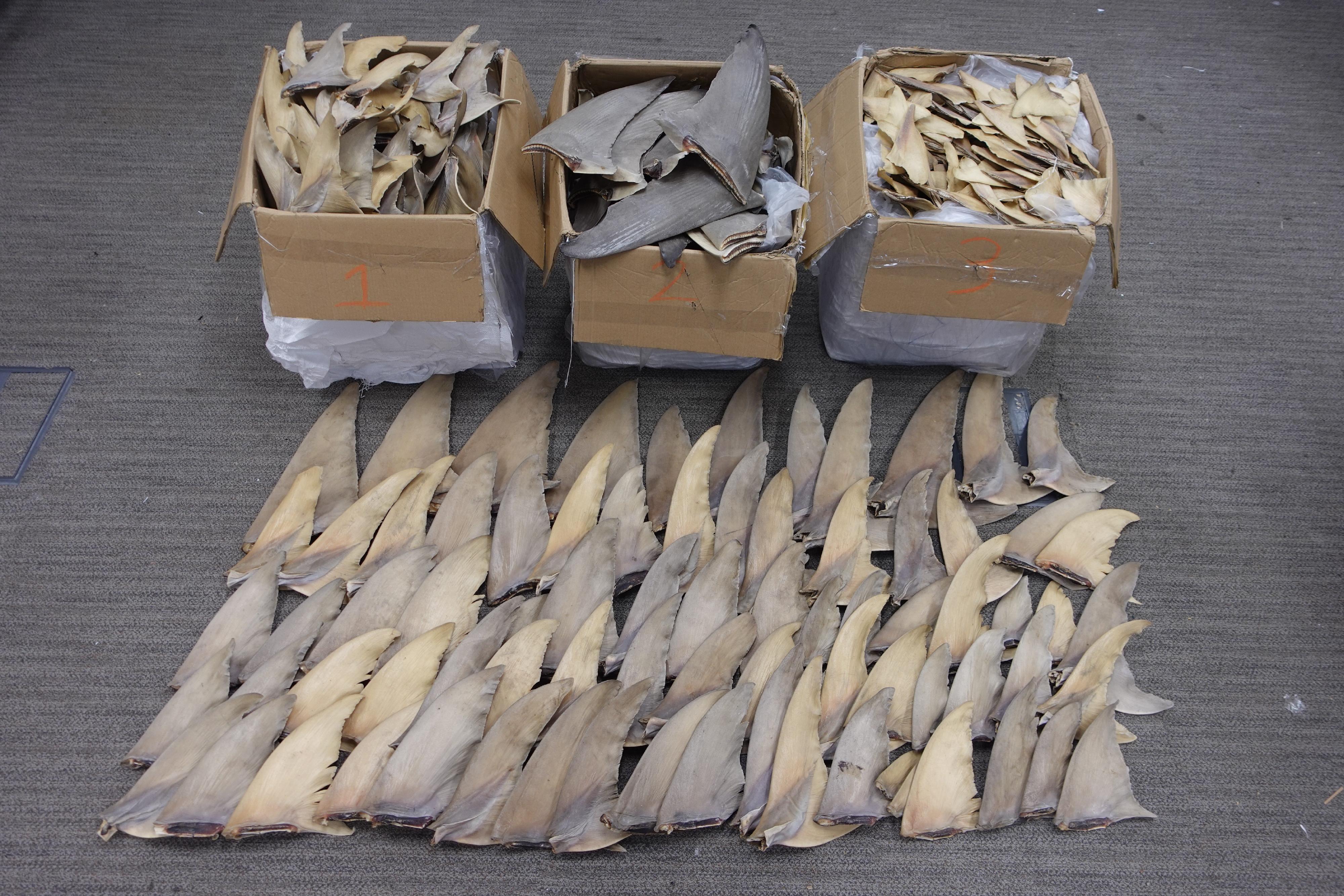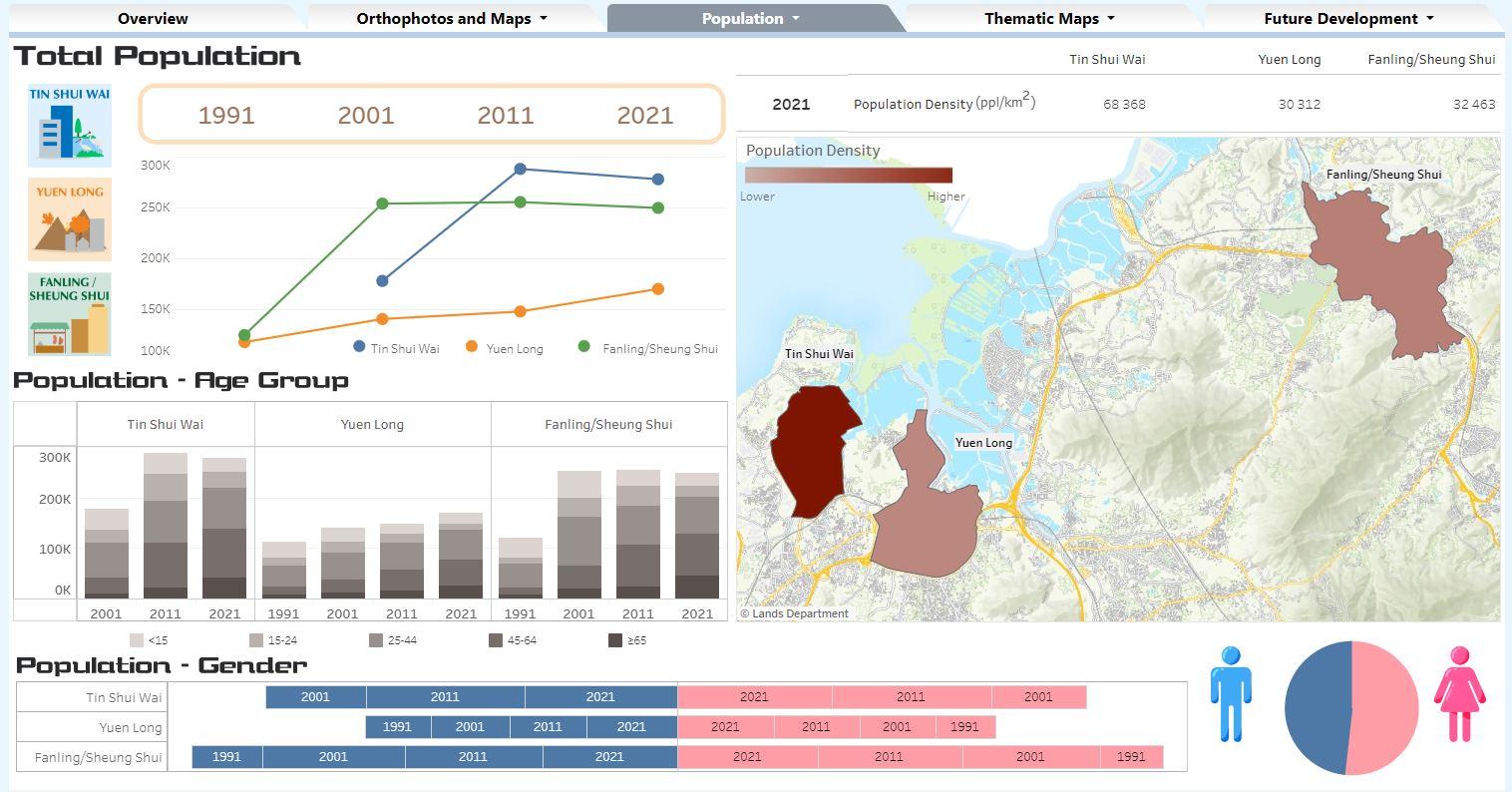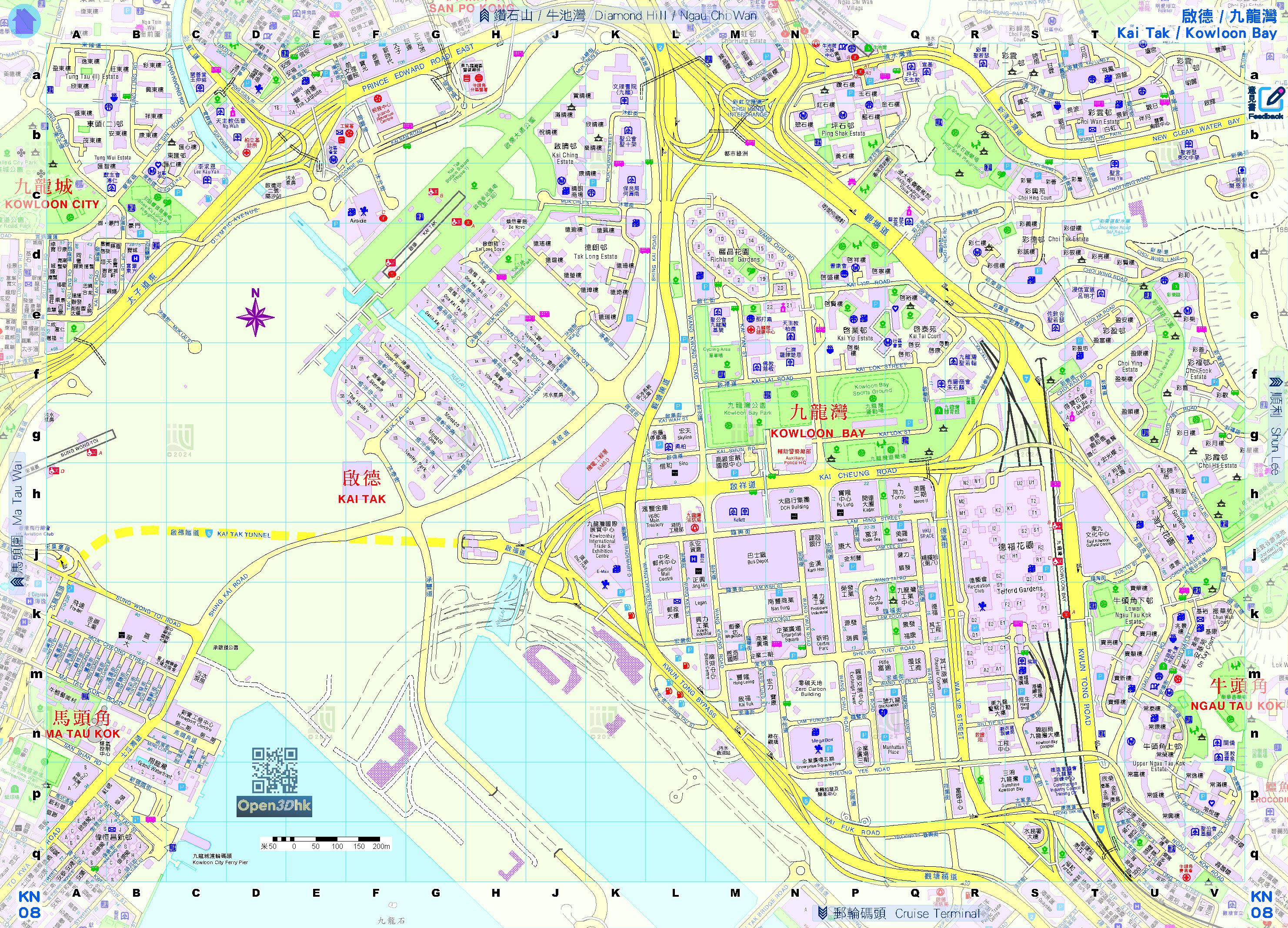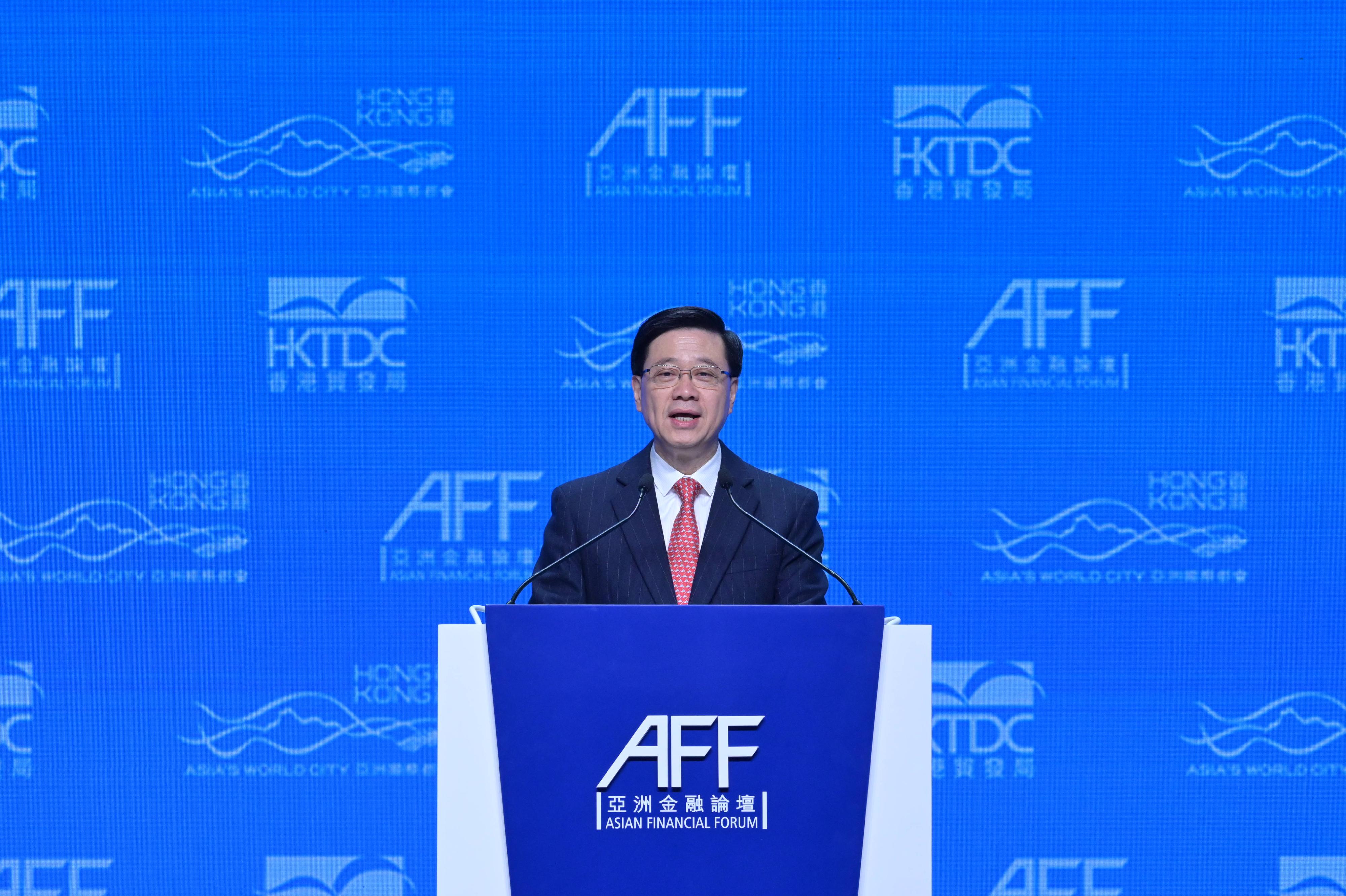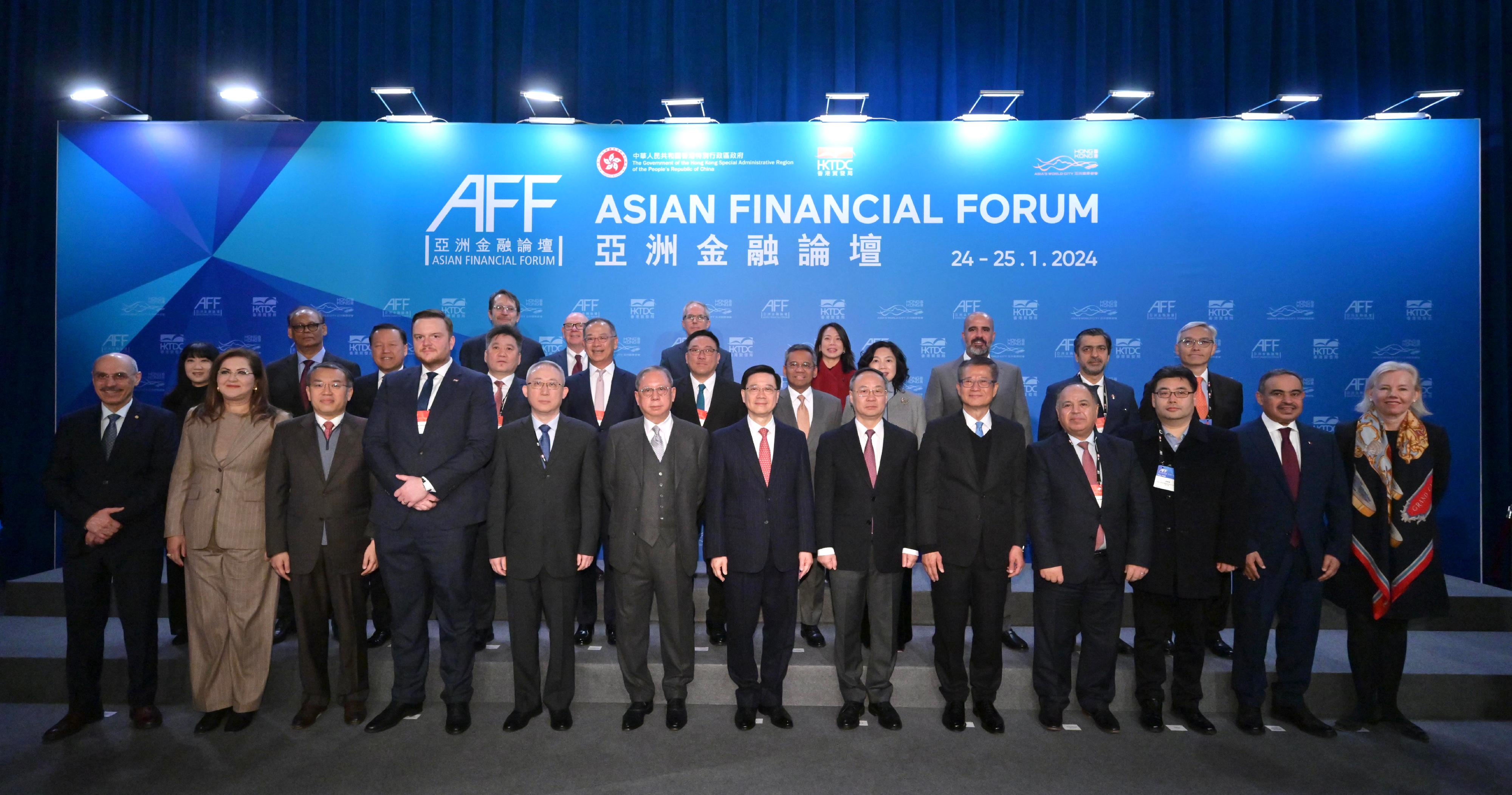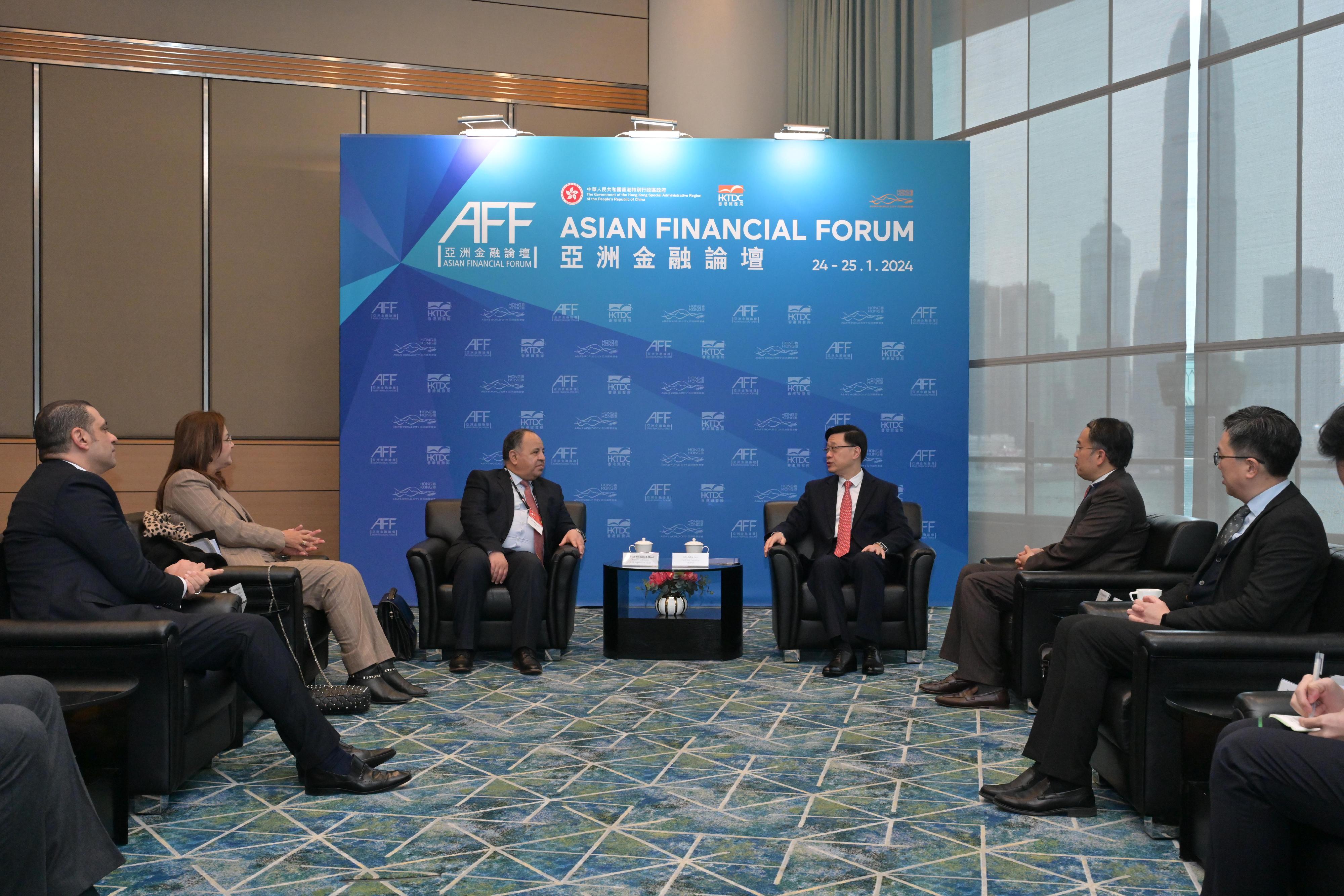Following is the speech by the Chief Executive, Mr John Lee, at the Asian Financial Forum today (January 24):
The Honourable Minister Li Yunze (Minister of the National Financial Regulatory Administration), Acting Commissioner Li Yongsheng (Acting Commissioner of the Office of the Commissioner of the Ministry of Foreign Affairs of the People’s Republic of China in the Hong Kong Special Administrative Region), honourable ministers and senior officials from around the world, Dr Peter Lam (Chairman of the Hong Kong Trade Development Council), distinguished guests, ladies and gentlemen,
Good morning. I’m delighted to welcome you all to Hong Kong, and to this 2024 Asian Financial Forum (AFF).
This is the first time for the Forum to be held entirely in person since 2020. Yes, we are back to business and finance, to deal-making, and day-to-day and day-to-night networking – today, tomorrow and, I’m sure, long down the road.
And when I say “we”, I mean not only Hong Kong, but also the world. I’m told that more than 3,000 of you are here for this 17th Asian Financial Forum. That you come from over 40 countries and regions. That you’re high-profile financiers and investors, international policymakers and business leaders, technology innovators and entrepreneurs, academics and professionals, and more.
You’re here to get informed intelligence and insight on the global and regional economies, on investment prospects, on a world that can sometimes seem to be rotating faster than we can imagine. You will also join the AFF Deal-making sessions, which focus on such industries of immense potential as fintech, environment, clean technology, medical technology and more.
With more than 130 high-profile speakers participating, and an exhibition zone bringing together some 140 exhibitors from around the globe, I’m confident we’ll all come away better informed, and better prepared, for the opportunities and the challenges of 2024 – and well beyond.
“Multilateral Cooperation for a Shared Tomorrow” is the theme of this year’s Forum. In a world of escalating de-globalisation and decoupling, international co-operation has never been more essential.
International market fragmentation can only lead to rising costs, reduced market liquidity and, ultimately, a diminished and destabilised financial system.
To foster a global community of development with a shared future, President Xi Jinping proposed the Global Development Initiative in 2021. The initiative promotes a mutually beneficial model based on open, and inclusive, co-operation. The initiative, I’m pleased to note, is gaining substantial support from the international community.
Under the “one country, two systems” principle, Hong Kong can create opportunities for companies, and economies, in Asia and around the world. We can, and we will, contribute to realising a bright and shared future for the global community.
“One country, two systems”, and the far-reaching opportunities it brings to us, has enabled Hong Kong’s financial sector to thrive despite the considerable challenges we face.
Hong Kong has long been a major listing platform for companies worldwide. We are also a pre-eminent biotech fundraising hub. Last year, the market capitalisation of Hong Kong’s listed companies totalled some 4 trillion US Dollars.
Mutual market access between Hong Kong and the Mainland of China, from stocks to bonds and derivatives, continues to expand. It has firmly established Hong Kong’s indispensable role as the capital bridge between the Mainland and international financial markets.
We are a key bond market, too. Consider this: for the past seven years, Hong Kong has been the largest centre arranging bonds issued internationally by Asian-based entities. In 2022, our bond volume exceeded 100 billion US Dollars, capturing 30 per cent of the Asian market.
For first-time international bond issuances by these entities, Hong Kong handled over 80 per cent of them in the regional market.
A prime asset and wealth management centre, Hong Kong managed close to 4 trillion US Dollars in assets as at the end of 2022. Two-thirds of that funding was sourced from non-Hong Kong investors. That makes us a leading international asset management hub in Asia. And, let me add, that we are also the cross-border private wealth management centre in Asia, and the second largest private equity centre in Asia, only after Mainland China.
In 2022, Hong Kong was home to more than 12,500 ultra-high-net-worth individuals, more than any other city in the world.
In Asia, we are the region’s biggest hedge fund centre, as well as its green and sustainable finance capital. One-third of Asia’s green and sustainable bond issuance was arranged in Hong Kong in 2022, tops in the region.
Over the past two years or so, Shenzhen and Hainan, both bustling hubs of growth in southern China, have issued offshore Renminbi government bonds in Hong Kong. The bonds totalled 25 billion Renminbi, including green, blue, social and sustainability bonds.
Beyond bonds, the Mainland’s continuing reform and opening up have brought immeasurable benefits to Hong Kong.
Hong Kong continues to hold the world’s largest offshore pool of Renminbi funds. As of October, our Renminbi deposits, including outstanding Certificates of Deposit, amounted to more than one trillion Renminbi. I’d say that’s more than ample liquidity to support offshore Renminbi transactions and financial activities. And that’s why, as much as three quarters of global offshore Renminbi payments are processed right here in Hong Kong.
In recent months, the Hong Kong Special Administrative Region (SAR) Government has responded to the evolving needs of market participants and investors. Allow me to highlight some of those developments.
Expanding mutual access between the financial markets of the Mainland and Hong Kong is a key policy priority. Last year, we broadened the scope of eligible stocks under Stock Connect, including the addition of stocks of foreign companies primary-listed in Hong Kong, as well as more than 1,000 stocks listed on the Shanghai and Shenzhen exchanges.
That, of course, greatly expands investment choices via Stock Connect. It also attracts international corporations to list in Hong Kong, boosting our fundraising competitiveness.
Last June, we launched a “dual counter model” that offers investors a choice between the Hong Kong Dollar and Renminbi in security trading. It facilitates the issuance and trading of Renminbi-denominated stocks here in Hong Kong.
To bolster liquidity of our stock market, we reduced the stamp duty on stock transfers last November.
This month, HKEX implemented revised Listing Rules to reform GEM, a board of our Stock Exchange dedicated to helping SMEs raise funds.
HKEX will also complete a consultation this month, on keeping our securities and derivatives markets operational during severe weather conditions. It would ensure that our investors can continue to manage their portfolios in regular trading hours even when we’re hit by typhoons and heavy rainstorms.
In green finance, we issued a one-year, tokenised green bond last year that amounted to over 100 million US Dollars.
It was the first tokenised green bond issued by a government anywhere. It has attracted widespread attention from investors and the financial media. It also showcased Hong Kong’s ability to combine the bond market, together with green and sustainable finance and fintech, too. We are now planning a second tokenised green bond issuance.
This underlines our strong commitment to digital assets and Web3. And our commitment, as a responsible economy, includes the necessary guardrails to mitigate risks. Rest assured, they will be put in place in accordance with international standards. To that end, a licensing regime for virtual asset service providers began operation last June.
We are, in short, working to ensure that Hong Kong builds on its status as, concurrently, China’s leading financial centre and one of the world’s major financial centres. In that regard, we are grateful for our country’s continuing support. Grateful, too, for our central place at the heart of Asia, where the future is fast rising.
Hong Kong, ladies and gentlemen, will be at the heart of the continuing eastward shift of economic prospect. We are the “super connector”, as well as the “super value-adder” bringing East and West together for rewarding opportunities long down this 21st century road of promise.
This was not just something advocated by me, my friends. At a panel held here in Hong Kong last week, the Nobel Prize-winning economist, Professor Joseph Stiglitz, expressed his optimistic outlook for Hong Kong. He acknowledged Hong Kong’s potential in building a knowledge- and innovation-based economy, and noted that we could explore new development opportunities by taking full advantage of our unique status within China.
And I am pleased to note that this Forum will have the privilege of sharing the wisdom from another Nobel Prize-winning economist, Professor Douglas Diamond. I am sure that all of you look forward to Professor Diamond’s insights on the economy.
And indeed, there is so much more worth looking forward to, while you’re in Hong Kong. Bringing East and West together is central to Hong Kong’s future in arts and culture, as well as business and finance.
I invite you to see for yourself during your stay in Hong Kong. We’ll make it easy for you. Thanks to the Hong Kong Tourism Board and other partners, several hundred tickets are available, free, for AFF participants to visit the Hong Kong Palace Museum. The museum features a treasure trove of Chinese art and culture from Beijing’s Forbidden City.
There are also free guided tours to the famous Lan Kwai Fong and Hong Kong’s night life, as well as a cruise down storied Victoria Harbour aboard the Aqua Luna, a traditional wooden junk boat, and much more.
And “more” is what you’ll be wanting once you’ve had a taste of the bright life, East and West. And only in Hong Kong.
My thanks to the Hong Kong Trade Development Council and the Financial Services and the Treasury Bureau of the Hong Kong SAR Government for organising this year’s Asian Financial Forum, for bringing us together again.
Before I go, allow me to wish you all a happy New Year. In just over two weeks, we will be celebrating the Chinese New Year – the Year of the Dragon.
The dragon symbolises power. It is said to inspire growth and progress. What we all hope for.
May the New Year bring the world peace and prosperity. May it bless each and every one of you with good health – and brilliantly timed investments, too.
Thank you very much.
read more


